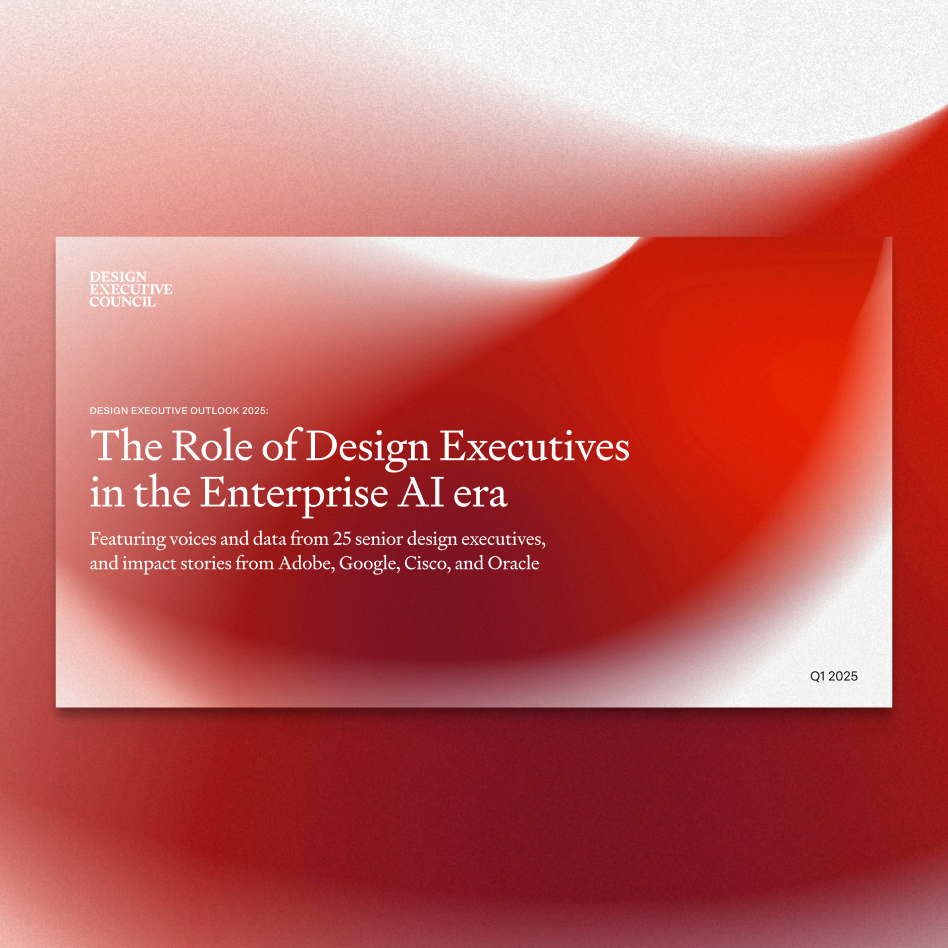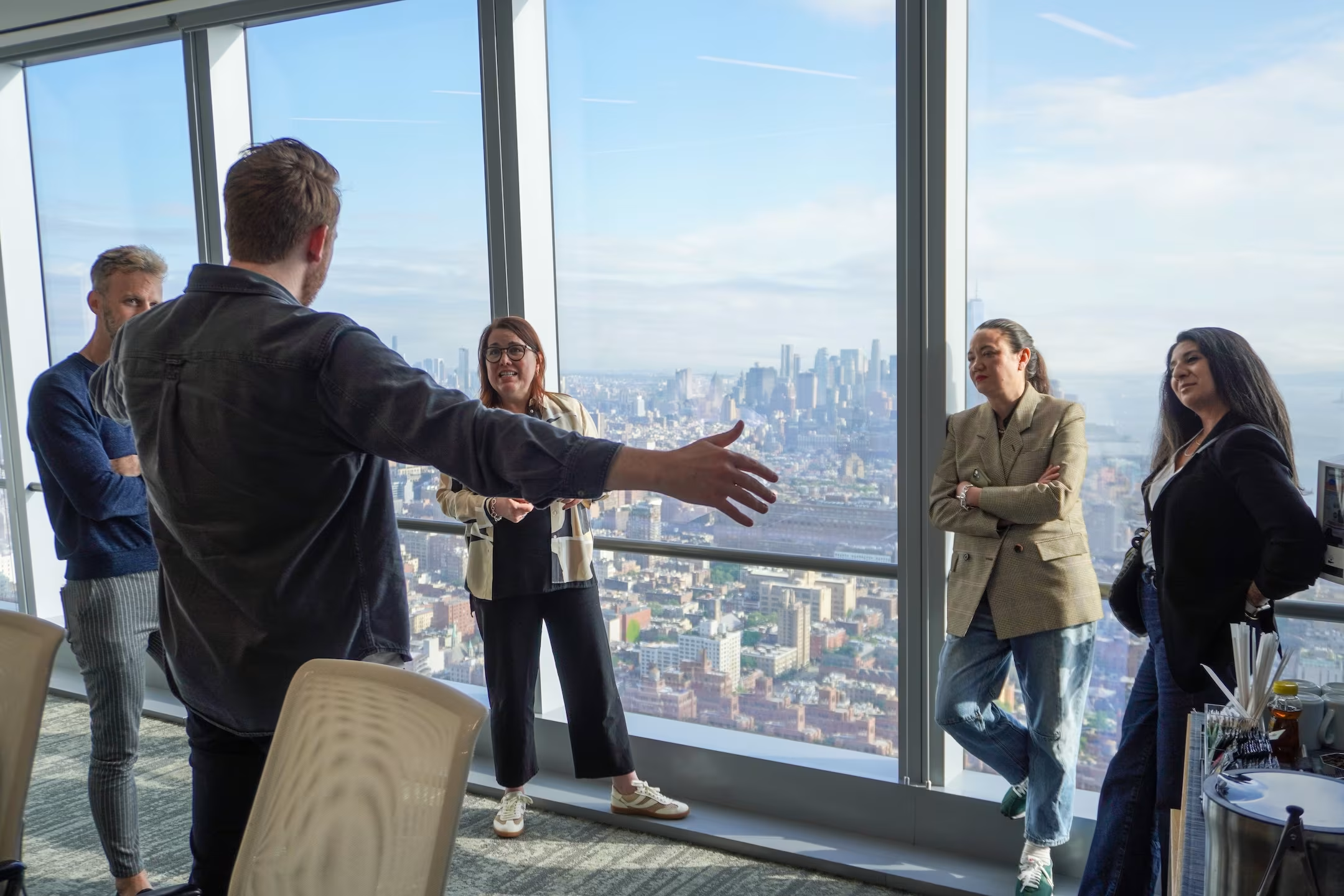Featuring:
Arin Bhowmick, EVP, Chief Design Officer at SAP
Formerly Chief Design Officer, IBM Products (July 2015 - April 2022)
Situation
IBM's rich design history boasts significant contributions to the evolution of design in the enterprise and over the years it has gone through multiple company transformations. In this case study, we expand on how IBM leveraged strategic design leadership to drive product innovation, design capabilities, and sales.
In 2018-2020, IBM was undergoing a significant transformation, with a heightened focus on hybrid cloud and AI solutions. Facing competition from cloud computing giants and pressure to innovate, IBM aimed to strengthen its position in the cloud market and expand its portfolio of AI-driven services. Challenges included balancing legacy business lines with emerging technologies, while opportunities lay in leveraging its expertise in enterprise solutions to drive digital transformation for clients in various industries. IBM had annual revenues in the tens of billions of dollars and employed tens of thousands of employees worldwide. Despite facing challenges and undergoing transformations, IBM continued to be recognized as one of the largest and most influential technology companies globally.
After a tenure of five years at IBM, Arin Bhowmick was five months into his elevated role as Chief Design Officer for IBM Software Products, when a chance encounter in the parking lot with his boss, Rob Thomas offered Arin a career defining opportunity. Arin recounts, “I remember vividly, I was in Austin at the time, and we were walking out of the building, and Rob was about to get into his car. And I needed five minutes to talk about some other transactional thing and he said, ‘Arin, I was just thinking, What's your thought on how we can bring in a product that is going to be compelling’ and I told him, ‘Rob, I feel like we've got the parts. But the power is bringing it together and exposing it in a way that makes sense to the customers and in doing so shows the power of IBM.” and Rob was like yeah you should think about it.”
At this time, Arin had built a reputation of a trusted advisor and had a number of successful projects prior to his new role. Arin oversaw 100% of the IBM software portfolio over 100 products across various domains such as cloud, security, automation, data, AI, BI, and applications. Product design operated under Arin's centralized model, tightly integrated with product teams on day-to-day execution, sprints, and roadmaps. While design was centralized, each product team and engineering had its own set of leaders, reflecting multiple organizational models within a global team structure. Arin's responsibilities included managing an design organization of up to 1200, focusing on end-to-end product design.
Solution
Project Zen UX journey started with a conversation between Arin and the SVP at the time, looking at the product portfolio, “We knew that we needed to grow new segments to grow. We were starting to see inversion in retention, and new company competitors coming in against specific parts of the portfolio. IBM had a challenging situation that some were home-grown versus acquisitions, so there was a technical debt over time.” Arin explained.
Arin was able to foster a collaborative culture where strategic decisions involved heads from various departments. “We felt at ease talking to each other. And never had a feeling that I wouldn’t be heard. I was involved in the strategy making of what we will do for the next year. I expected this to happen, but it actually happened in the room. Around that time, we also had the head of sales, head of marketing, R&D, product management, design, engineering, technical architects and customer success. It was very cross-functional.”
During discussions, Arin proposed integrating existing product parts cohesively to showcase IBM's full capabilities, receiving encouragement from leadership to explore the idea further.
There was an annual conference bringing key IBM customers together coming up in two months at Moscone Center in San Francisco. It was a huge revenue-generating event, “I spoke to the head of engineering, and the head of product management. Maybe, we could do something about putting these pieces together and showcase the power and differentiation through great UX?”
This led to a skunkworks design project initiated by Arin, leveraging his business acumen was essential but it gave him more pride that there was strategic design tied to it. Because it was such a macro-level project, Arin as CDO, was able to manage it directly, which was uncommon but rewarding for Arin. This demonstrated the pivotal role of design in driving macro-level business initiatives, ultimately contributing to IBM's strategic vision and customer engagement. “And that's what we did in the next one and a half months, a concept with a few use cases that showed a couple of things: first that we had been taking ux seriously; second that we have a unique point of view for that domain and market; and third, we are thinking about customer journeys and problems that others haven't solved yet. So three different things, one from the business side, one from the perception side and one from the technical side.”
As the person closest to the design, Arin felt confident he was best informed to demo the product direction on stage with thousands of potential customers in the audience. Throughout the process, there was tight alignment between Product Management, Engineering and Design. Arin described the entire process as amorphous as the three departments worked seamlessly and synergistically.
Project Zen progressed from idea to market with general availability in 6-8 months. Design served as the main interface with marketing, providing assets that guided the product direction and the UX collateral that complemented the messaging. Arin's ability to balance both design and business competencies served him well, demonstrating the diversity of the design executive role in enterprise environments. His work involved collaboration with analysts, PR, marketing, and customer service to ensure effective delivery.
Reflection
That product based on a skunkworks project, a 2-minute teaser video and Arin’s demo generated $100 million in qualified leads in that one conference, created $37 million bookings in the second quarter and $75 million in the next. This resulted in the product team increasing headcount by 30% over two years and IBM investing $40-60 million in design capabilities across multiple business segments.
Arin reflects on that first conversation with Rob, and the subsequent conversations with the heads of engineering and product management , “I think that's the power of great leaders. They are pretty adept at figuring out who within the circle would be driven enough to do it themselves. Of course I had to drive, but one of the things is that in the enterprise world, I've learned that it's very hard to come up with a new product, because, you have customers on it for a while and it's hard to bring about changes so when you get an opportunity I wanted to grab in both hands.”
His candor and insights into Project Zen reveal a number of unique behaviors that strategic design leaders bring to businesses. The ability to understand and motivate cross functional teams, being strategic while also being hands on, a natural curiosity to understand the financial opportunity as well as the implications.
Arin attributes much of his future success to the moment when he and his team was able to catch lightning in a bottle, “I want to say that a lot of my success beyond that moment hinged on this moment, when I was the CDO I was around 760-700 designers. By the time I left, I had 950-1000 direct and then some indirect growth."
And finally, “If you follow your passion and bring in the right people to do the work and collaborate along the way you get the results.”
Arin continues his quest for design excellence and design impact in his current role of Chief Design Officer at SAP. “I truly learnt the meaning of good design is good business with my IBM experience, and use the learnings as a guiding light in my current job, in uplevelling design maturity, design craft and UX differentiation. Once you know what you are capable of, you yearn to go above and beyond”.









